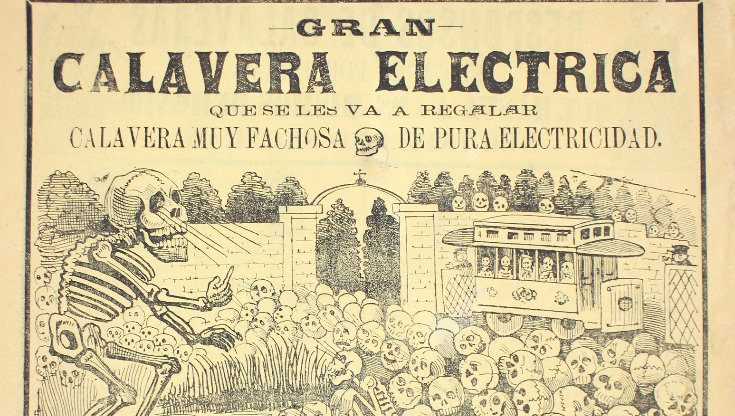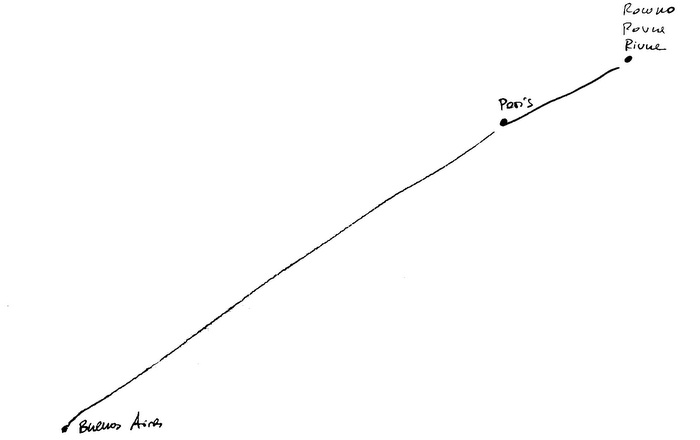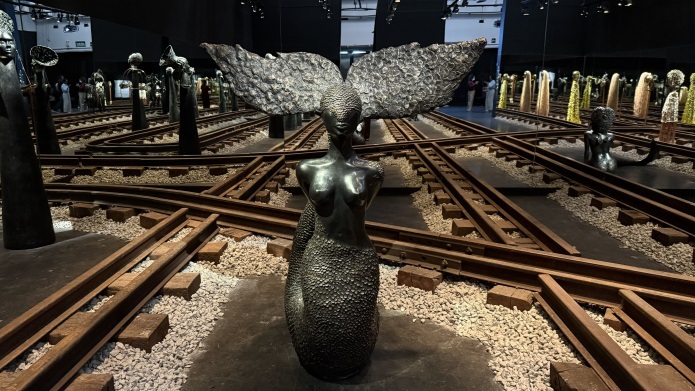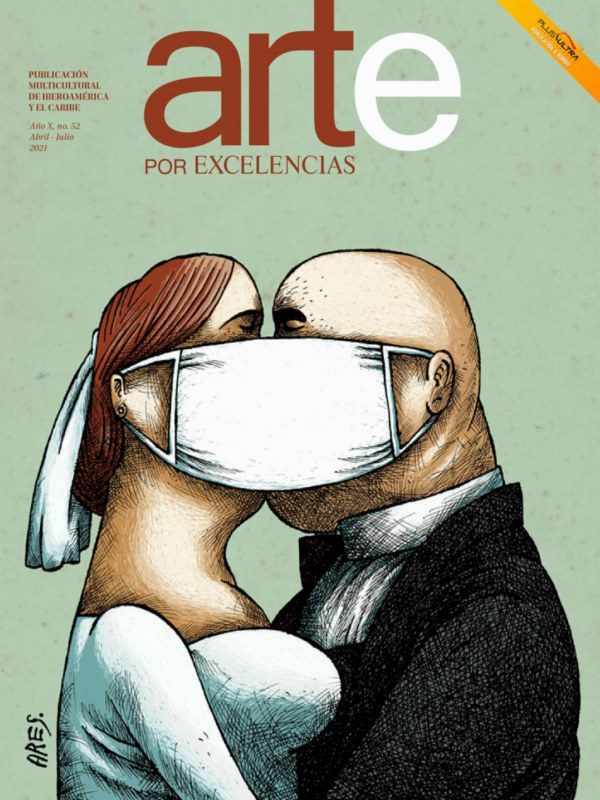José Guadalupe Posada is thought to have said “death is democratic.” Through his years as a printmaker, Posada’s work was distributed widely and seen by all classes of people in late 19th and early 20th century Mexico. Well-known today for his images of calaveras or skeletons, Posada used these figures sometimes as satire and also timed their publications with Dia de los Muertos.
“Gran Calavera Electrica,” for instance, celebrates the extension of a Mexico City trolley-car line around Dia de los Muertos that year. A gigantic skeleton, looming over a plaza of smaller skulls and skeletons, regales his audience with the news, while in the background a trolley car full of enthusiastic skeleton passengers waits to depart.
The illustration’s caption reads: “On the first of November, like racing devils they will run — the electric carriages that will arrive in Dolores” (a street in Mexico City).
POSADA! also features 14 “chiaroscuro” engravings, originally intended as small chapbook covers. These prints were made using two plates, one printed with black ink and the other usually in red. The effect creates a sense of depth and provides another layer of visual interest.
Many of Posada’s chapbooks were collections of popular songs including a 1900 printing of “La Inundacion de Leon”, referencing the 1888 floods which killed 200 people in Leon in the state of Guanajuato. Unusual subject matter in his chapbooks, this dovetails with the nature of many of Posada’s broadsides depicting current events.
Posada was sometimes mythologized as a revolutionary by Diego Rivera and other printmakers of the mid 20th century. While Juan José Arreloa said that Posada’s engravings were “the first bullets of the Revolution,” a closer inspection of the broadsheets containing his amazing depictions of Zapata tells a different story. In one the text states, “Zapatismo is the worst you’ll find, it is the baddest seed.” In another he is compared to Atilla the Hun. If anything, Posada’s works repudiate rebellion of any kind.
It must be noted that Posada was a commercial artist, working under the direction of his publisher. His longtime patron, A. Vanegas Arroyo, would not have been as successful if he ran a revolutionary press. It is difficult to say with much certainty what beliefs Posada genuinely held. None of this should diminish the perception of his ability as satirist and illustrator. His influence on Mexican art continues to be massive and what his personal political stance is perhaps irrelevant. Like most historical figures, it is his mythologized being that holds the greatest influence.
Another Posada exhibition, José Guadalupe Posada: Legendary Printmaker of Mexico is on view at the Albuquerque Museum through May 23. “Posada engaged with the visual language of the time,” says Albuquerque Museum Curator of Art Josie Lopez, Ph.D. “Modernism was developing. Mexico City was becoming cosmopolitan, on par with Paris and London.”
POSADA! will open Friday, February 26 and will be on view through March 21. There will be no opening reception. Please note that we are allowing no more than 4 visitors in the gallery at a time and masks are required.
WHAT/WHO: POSADA!, an exhibition of works by José Guadalupe Posada (1852-1913) printed between 1880 and 1910.
WHEN: Opening Friday, February 26, on view through March 21, 2021
WHERE: Hecho a Mano, 830 Canyon Road, Santa Fe, NM 87501















